| Listing 1 - 10 of 51 | << page >> |
Sort by
|
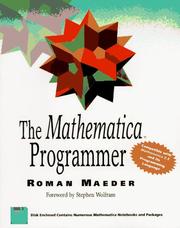
ISBN: 0124649904 Year: 1994 Publisher: Cambridge (Mass.) : AP Professional,
Abstract | Keywords | Export | Availability | Bookmark
 Loading...
Loading...Choose an application
- Reference Manager
- EndNote
- RefWorks (Direct export to RefWorks)
Book
ISBN: 0387940480 3540940480 Year: 1993 Publisher: New York (N.Y.) : Springer,
Abstract | Keywords | Export | Availability | Bookmark
 Loading...
Loading...Choose an application
- Reference Manager
- EndNote
- RefWorks (Direct export to RefWorks)
Book
ISBN: 1139625039 1107234557 1139610155 1139608592 1139612018 1139615734 129940569X 1139621319 0511972946 Year: 2013 Publisher: Cambridge : Cambridge University Press,
Abstract | Keywords | Export | Availability | Bookmark
 Loading...
Loading...Choose an application
- Reference Manager
- EndNote
- RefWorks (Direct export to RefWorks)
Starting from first principles, this book covers all of the foundational material needed to develop a clear understanding of the Mathematica language, with a practical emphasis on solving problems. Concrete examples throughout the text demonstrate how Mathematica can be used to solve problems in science, engineering, economics/finance, computational linguistics, geoscience, bioinformatics, and a range of other fields. The book will appeal to students, researchers and programmers wishing to further their understanding of Mathematica. Designed to suit users of any ability, it assumes no formal knowledge of programming so it is ideal for self-study. Over 290 exercises are provided to challenge the reader's understanding of the material covered and these provide ample opportunity to practice using the language. Mathematica notebooks containing examples, programs and solutions to exercises are available from www.cambridge.org/wellin.
Book
ISBN: 131655760X 1316560333 1316337731 Year: 2016 Publisher: Cambridge, England : Cambridge University Press,
Abstract | Keywords | Export | Availability | Bookmark
 Loading...
Loading...Choose an application
- Reference Manager
- EndNote
- RefWorks (Direct export to RefWorks)
Essentials of Programming in Mathematica provides an introduction suitable for readers with little or no background in the language as well as for those with some experience using programs such as C, Java, or Perl. The author, an established authority on Mathematica programming, has written an example-driven text that covers the language from first principles, as well as including material from natural language processing, bioinformatics, graphs and networks, signal analysis, geometry, computer science, and many other applied areas. The book is appropriate for self-study or as a text for a course in programming in computational science. Readers will benefit from the author's tips, which provide insight and suggestions on small and large points. He also provides more than 350 exercises from novice through to advanced level with all of the solutions available online.
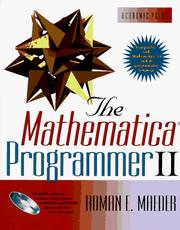
ISBN: 0124649920 9780124649927 Year: 1996 Publisher: San Diego: Academic press,
Abstract | Keywords | Export | Availability | Bookmark
 Loading...
Loading...Choose an application
- Reference Manager
- EndNote
- RefWorks (Direct export to RefWorks)
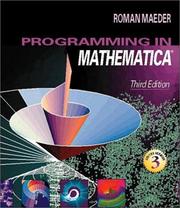
ISBN: 020185449X 9780201854497 Year: 1996 Publisher: Redwood City (Calif.): Addison-Wesley,
Abstract | Keywords | Export | Availability | Bookmark
 Loading...
Loading...Choose an application
- Reference Manager
- EndNote
- RefWorks (Direct export to RefWorks)
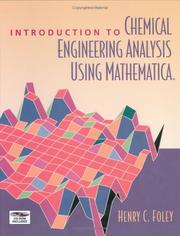
ISBN: 0122619129 9780122619120 9781435604995 1435604997 0080534953 9780080534954 1281054194 9781281054197 9786611054199 6611054197 Year: 2002 Publisher: San Diego, Calif. Academic Press
Abstract | Keywords | Export | Availability | Bookmark
 Loading...
Loading...Choose an application
- Reference Manager
- EndNote
- RefWorks (Direct export to RefWorks)
This book provides an introduction to chemical engineering analysis- which reviews the processes and designs used to manufacture, use, and dispose of chemical products-and to Mathematica, one of the most powerful mathematical software tools available for symbolic, numerical, and graphical computing. Analysis and computation are explained simultaneously. The book covers the core concepts of chemical engineering, ranging from the conservation of mass to chemical kinetics. At the same time the text shows how to use the latest version of Mathematica, from the basics of writing a few lines of code through developing entire analysis programs.
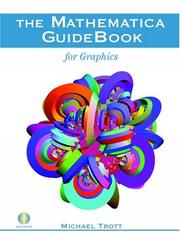
ISBN: 9780387950105 0387950109 Year: 2004 Publisher: New York (N.Y.): Springer,
Abstract | Keywords | Export | Availability | Bookmark
 Loading...
Loading...Choose an application
- Reference Manager
- EndNote
- RefWorks (Direct export to RefWorks)
Computer graphics --- Mathematica (Computer program language)
Book
ISBN: 9789813224155 9789813222717 9813222719 9813224150 Year: 2018 Publisher: Singapore: World scientific,
Abstract | Keywords | Export | Availability | Bookmark
 Loading...
Loading...Choose an application
- Reference Manager
- EndNote
- RefWorks (Direct export to RefWorks)
Book
ISBN: 1107272343 0511863179 Year: 2013 Publisher: Cambridge : Cambridge University Press,
Abstract | Keywords | Export | Availability | Bookmark
 Loading...
Loading...Choose an application
- Reference Manager
- EndNote
- RefWorks (Direct export to RefWorks)
This new text surveys a series of fundamental problems in astrophysics, both analytically and computationally, for advanced students in physics and astrophysics. The contents are supported by more than 110 class-tested Mathematica® notebooks, allowing rigorous solutions to be explored in a visually engaging way. Topics covered include many classical and historically interesting problems, enabling students to appreciate the mathematical and scientific challenges that have been overcome in the subject's development. The text also shows the advantages and disadvantages of using analytical and computational methods. It will serve students, professionals and capable amateurs to master the quantitative details of modern astrophysics and the computational aspects of their research projects. Downloadable Mathematica® resources available at www.cambridge.org/koberlein.
Astrophysics --- Mathematica (Computer program language) --- Data processing
| Listing 1 - 10 of 51 | << page >> |
Sort by
|

 Search
Search Feedback
Feedback About UniCat
About UniCat  Help
Help News
News